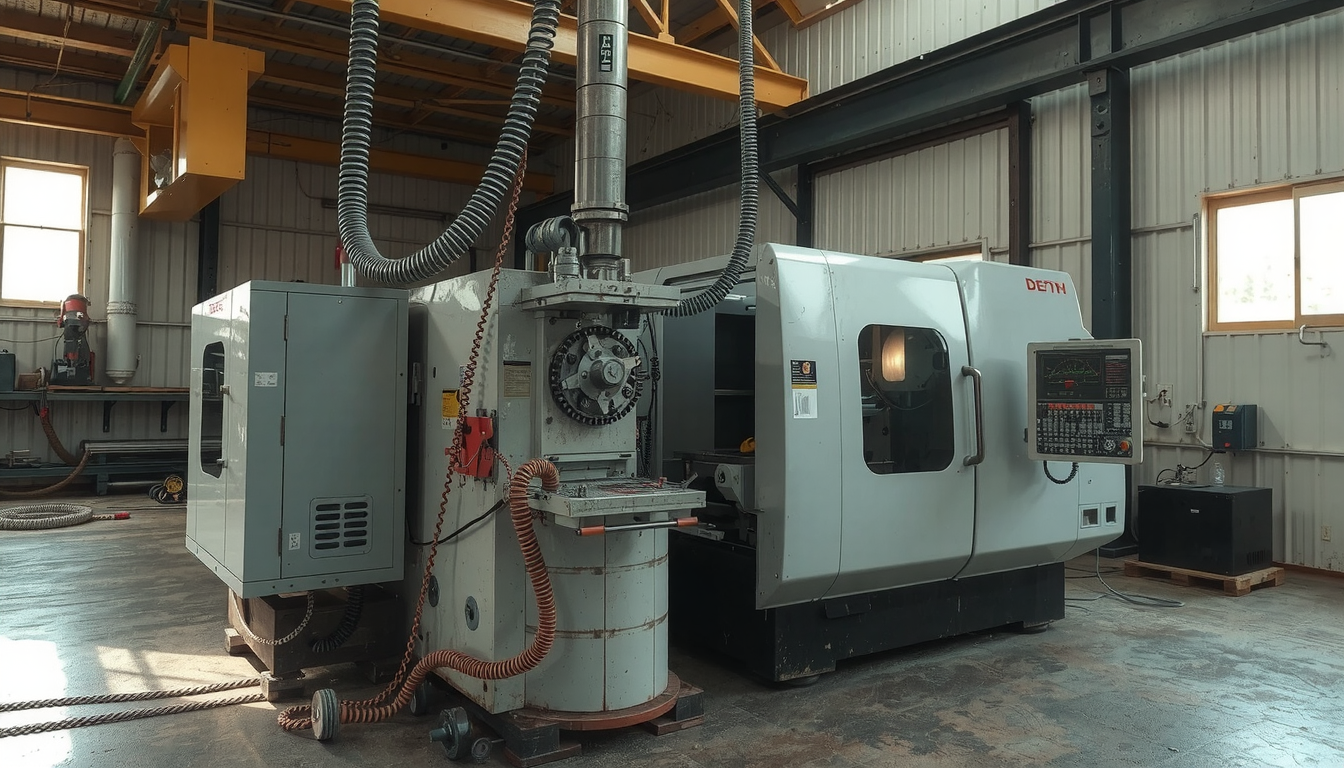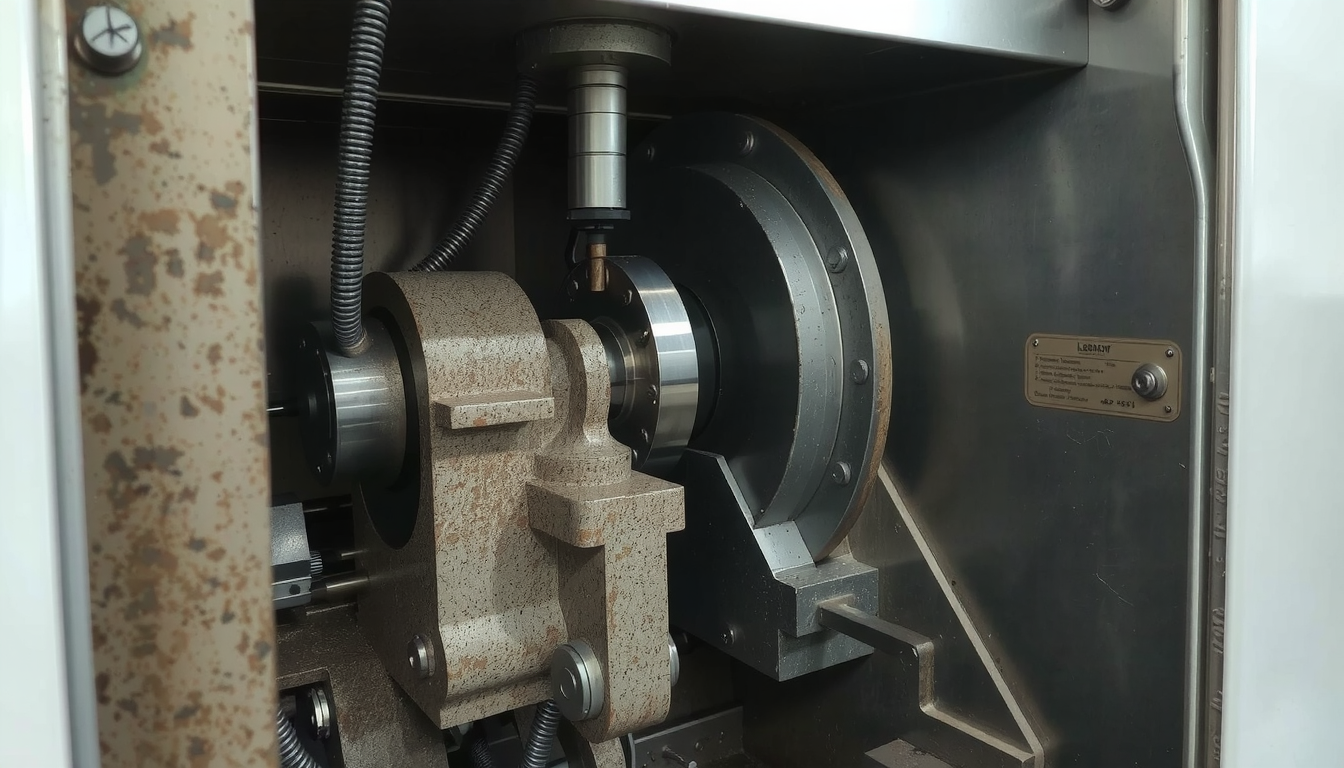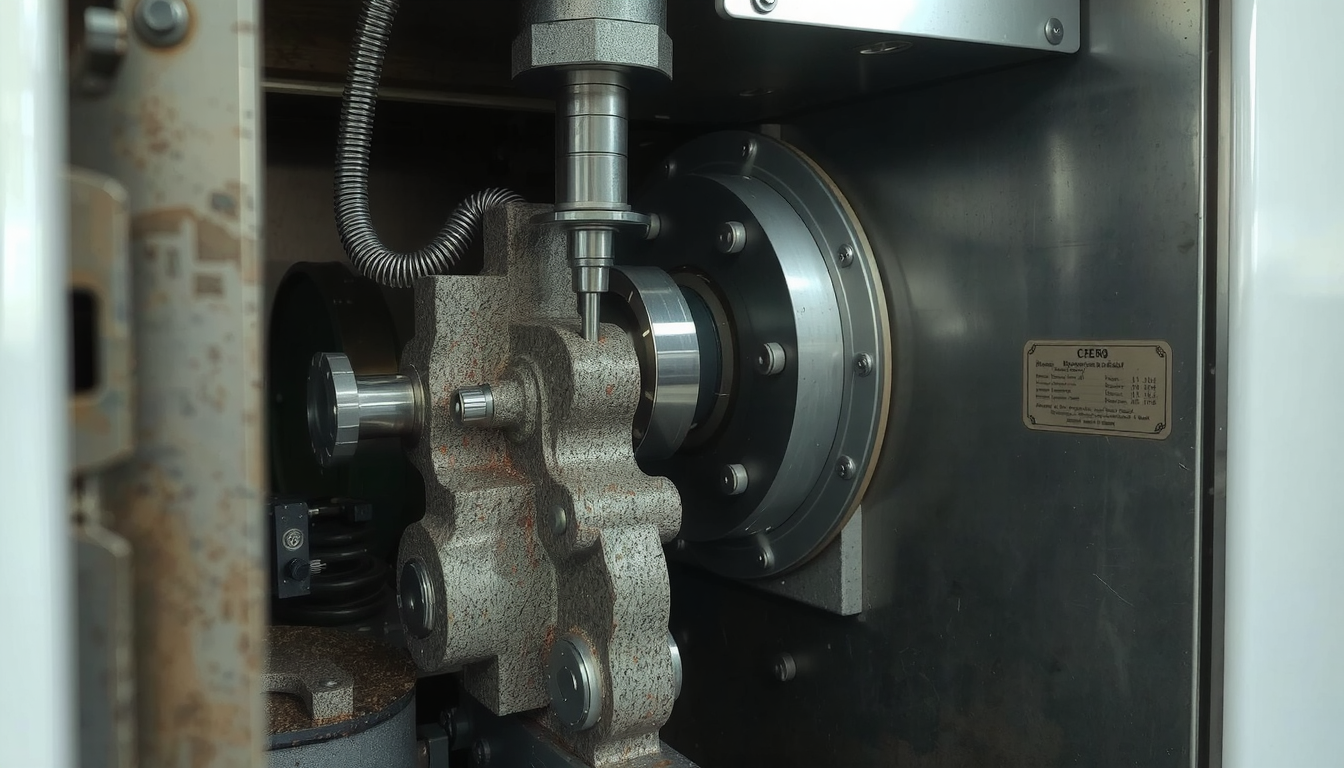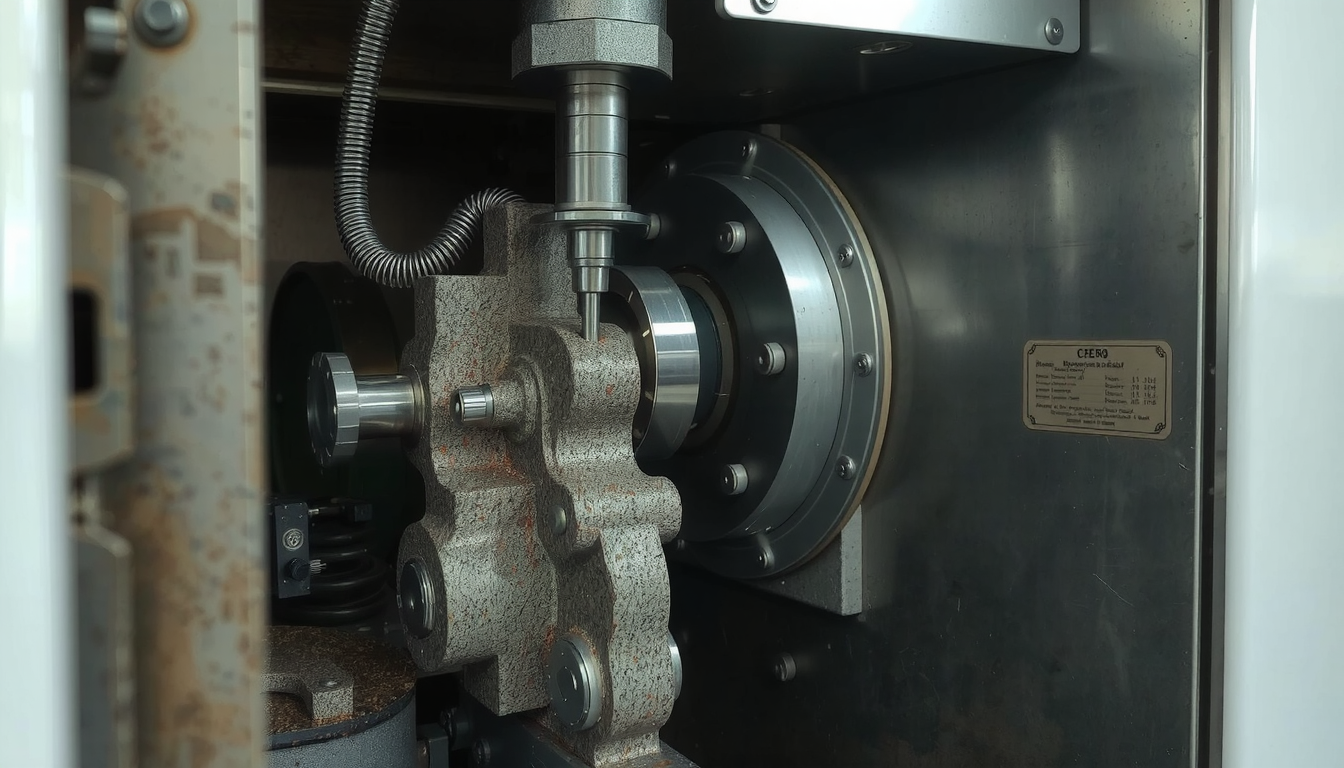A CNC lathe is a machine tool that makes it possible to manufacture accurate circular parts. Its operation consists of rotating a workpiece in the opposite direction of a tool. CNC is a short form of Computer Numerical Control. This implies that the machine is directed by a computer program that specifies how to apply the cutting.

This machine’s central function is to crop the workpiece material. These materials are metal, plastic, and wood. For example, it can produce shafts, nuts, and special fittings. Therefore, in case you have ever doubted what is a cnc lathe used for, this article will cover its working principle, types of parts, and the benefits of using it. We will also look into how this particular machine supports manufacturing.
Basic Knowledge: CNC Lathe vs. CNC Mill
Before we dive into the CNC lathe, we find it useful to push through its board functionality with that of CNC mill machines since these are comparable machines. Both work through computers that tend to cut parts. But they reverse the operation. Therefore, one function works better for a specific type of material than the other.
A CNC lathe is characterized by the spinning of a piece of material which is then processed by a tool. The tool then carves along the chip to arrange it into the desired shape. The material is primarily characterized by features that are derived from this configuration. The approach is known as turning.
On the contrary, a CNC mill operates. The cutting tool spins and moves in contact with the fixed material. Hence, it is ideal for forming flatwork, pockets, and complex geometries which are not round. For example, a lathe is a spinning wheel where the clay forms a pot. So, the mill is similar to a sculptor who uses a chisel to carve a block of stone that remains in place.
| Fonctionnalité | Tour CNC | Broyeur CNC |
|---|---|---|
| Workpiece Motion | Rotates | Stationary |
| Tool Motion | Moves linearly | Rotates and moves |
| Meilleur pour | Pièces cylindriques | Flat/complex parts |
| Primary Process | Tournage | Fraisage |
Primary Functions: A CNC Lathe Can Do
CNC lathes are usually cutting tools for many different operations. The thus green light makes CNC lathes the leading machine tools to turn a workspace into a technology-wise perfect facility. Knowing about several jobs is instrumental in comprehending the way a CNC lathe operates in a workshop. One of the outstanding features of a Fonctionnement d'un tour CNC is the multi-functioning capability.
Tournage
Turning is the chief lathe process. The tool goes straight parallel to the workpiece and takes away chips from the surface. The more material removed, the smaller the diameter gets or the other chip is reshaped to the desired size.
Face
Facing creates a solid and flat surface at the end of the bar. The tool goes outward from the part’s center. It is often the very first step. Thus, it assures a part having a clean, square surface for other processes.

Grooving and Parting
Grooving involves making a channel or groove at a specific depth into the part. A parting tool is similar to that of the grooving one. Usually, it is applied to cut the part off completely from the raw material bar at the end.
Filetage
CNC lathes are quite proficient in forming threads. The machine cuts external threads, for example, on bolts. Nuts can have internal threads clicking in place. The computer maintains the extreme precision of the cutting tool movement. This results in the correct threading each and every time.
Drilling and Boring
The lathe can also be interestingly used for making holes in other materials. Drilling is conducted using a drill bit that goes through the center of the part. On the other side, boring which is a special tool, makes an existing hole larger and perfectly round to the exact size needed.
moletage
Knurling is a technique that gives a part a decorative, functional surface. A specific tool is pressed using the force onto the surface. The pattern on the surface creates an improvement on the grip. The area in which you frequently see it is on tool prints and control knobs.
From Computer to Component: An Actual Example
Let’s demonstrate what is a CNC lathe used for beyond understanding it graphically. It is assumed at first that we will require a custom-threaded dowel pin made of steel for a machine.
Step 1: The Digital Blueprint (CAD/CAM)
The process starts at a computer, not the machine. First, an engineer makes a 3D model of the dowel pin in CAD software. CAD stands for Computer-Aided Design. This digital blueprint has all the exact sizes. This includes the width, length, and thread details.

Next, this CAD model goes into CAM software. CAM stands for Computer-Aided Manufacturing. The CAM software plans the cutting tool paths. It changes the visual design into G-code. G-code is a special programming language. G-code is a list of commands that tells the CNC lathe exactly where to move, how fast to spin, and which tool to use.
Step 2: Machine Setup and Preparation
With the G-code ready, we move to the shop floor. A machinist secures a long bar of raw steel into the lathe’s chuck. The chuck is the device that grips and spins the material.
Then, the needed cutting tools go into the machine’s tool turret. For our dowel pin, this would include a facing tool, a turning tool, a threading tool, and a parting tool. The turret can rotate to bring the right tool into position for each step of the program. The machinist then sets the machine’s starting point. This way it knows where the end of the steel bar is.
Step 3: The Machining Process in Action
The operator closes the machine door and starts the program. The CNC lathe takes over. It runs the G-code sequence automatically. First, the facing tool cleans up the end of the bar. This makes a smooth, flat surface.
Second, the tool turret rotates to bring the turning tool into place. It moves along the bar. It removes material in several passes to bring the pin to its final, precise width. Coolant floods the area to keep the tool and part from getting too hot. It also washes away chips.
Third, the threading tool moves into position. It makes multiple, careful passes to cut the threads onto the end of the pin. It follows the exact path defined in the G-code.
Step 4: Finishing, Parting, and Quality Control
Once all the features are machined, the parting tool moves in. It cuts into the part and cuts the finished dowel pin from the rest of the steel bar. The small, finished part drops into a part catcher.
The machine is now ready to start the process all over again to make another identical pin. Before moving on, the machinist takes the first part and checks its quality. Using digital calipers and thread gauges, they measure every dimension. This makes sure it matches the CAD blueprint’s tight tolerances. This confirms the setup is correct and that all future parts will be perfect.
Real-World Impact: Industries Using CNC Lathes

The versatility of CNC lathes is vast. The vast majority of companies that deal with tangible products primarily depend on these lathes. Your knowledge of what is CNC lathe used for will be correct and well-grounded in the above-discussed departments. Some of the following are the kinds of parts produced in these business sectors.
- Automobile : Pistons, crankshafts, camshafts, brake discs, axles, and wheel hubs.
- Aérospatiale : Turbine engine parts, landing gear parts, high-pressure fittings, and fasteners. The high-stakes nature of aerospace makes the precision of these machines essential for many industrial applications of a CNC Lathe Machine.
- Médical : Custom surgical implants like bone screws and hip joints, parts for diagnostic equipment, and precision tools for surgeons.
- Energy (Oil & Gas): Parts for downhole drilling tools, valve bodies, threaded pipes, and connectors that must withstand extreme pressure.
- Électronique : Connector pins, tiny shafts for electric motors, and custom metal housings for sensitive electronic devices.
- Consumer Goods: Metal flashlight bodies, parts for high-end pens, parts for bicycles, and fittings for plumbing fixtures.
Major Benefits: Why Manufacturers Trust CNC Lathes
Taking into consideration the reasons behind selecting CNC lathes to manual methods, we find the causes to be multiple. The perks above all help to address significant production issues with regard to quality, speed, and cost. It is understandable that this technology is comprehensive because of these benefits.
For Precise and Complex Parts Unmatched
CNC lathes can reach exceptionally high degrees of execution thanks to the minimal human influence. Thus, these machines are well-suited for programming very complicated components with extremely tight tolerances. Common tolerances fall between ±0.005mm and ±0.025 mm. Thus, parts are perfectly matched and function great.
For Perfectly Repeatable Production and Scalability
One of the CNC lathe machine’s key capabilities is consistency in making different pieces that are all 100% identical. This kind of repeatability is out of reach in manual labor. The Benefits of using CNC lathe machines include the answer to scale production from a single prototype to full-scale manufacturing.
For Enhanced Speed and Effectiveness
Automated lathes have a direct link to production efficiency. The CNC runs as a standalone unit after startup. As a result, the work has been outsourced, and labor costs have been lowered. Moreover, they work faster than a manual process. In addition, these companies can now deliver their products earlier. With maximum efficiency at the center of the agenda, CNC technology is essential in achieving it, as demonstrated at Mékalite.
Get the Right Experience for Your CNC Lathe Requirements
Achieving both precision and efficiency is not just a matter of purchasing the right machinery. It also necessitates skills in programming, setup, and quality control. Collaborating with a knowledgeable partner is highly advisable for schemes that need high-quality turned parts. In case you are considering solutions for your upcoming project, professional Services de tournage CNC can be the primary source of the quality and reliability that you need.
FAQ: Your CNC Lathe Questions Answered
This is a list of possible questions regarding CNC lathes often asked by people who study about different kinds of lathes.
1. What is the major difference between a CNC lathe and a CNC mill?
A CNC lathe can spin and rotate the workpiece in which a stationary tool cuts it. Thus, a lathe is fit for rounding or cylinder shapes. On the other hand, a CNC mill rotates the tool and traverses it across a stationary part. This is the reason why it is better for flat surfaces and more complex, non-round shapes.
2. What materials can a CNC lathe work with?
CNC lathes are very multi-specialty. They can machine a variety of metals such as aluminum, steel, brass, and titanium. They are also capable of dealing with various plastics, such as ABS, polycarbonate, and PEEK. Wood is yet another material you can run with a CNC lathe. The choice of cutting tool and machine settings depends on the material.
3. How accurate is a CNC lathe?
Today, CNC lathes are extremely complex machines. Depending upon the machine and material, it is usual to have tolerances as narrow as ±0.005mm (which is almost 0.0002 inches). This ensures that the parts meet strict requirements for proper fit and function.
4. Is it possible to use a CNC lathe for small, one-off projects?
Yes, indeed. While they form a great production line, CNC lathes are also effective for single prototypes or small batch manufacturing. Thanks to their programmability allowing for quick setup for custom, one-of-a-kind parts, this is the case. And that is the reason why they have been crucial for rapid prototyping and custom fabrication.
5. What is “turning” in the context of a CNC lathe?
Turning is the function of a lathe. The tool is of the CNC lathe. It is the procedure through which material is removed from the external side of a workpiece that is spinning. A cutting tool moves along the part to reduce its diameter and create a specific shape. This may be a straight cylinder, a cone, or a curved profile.

